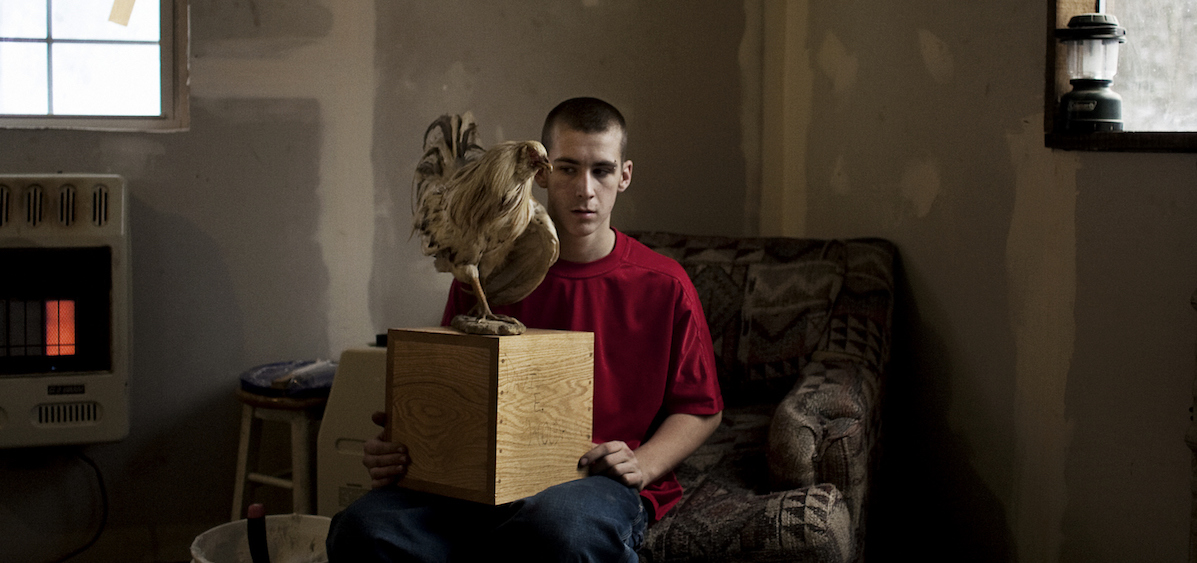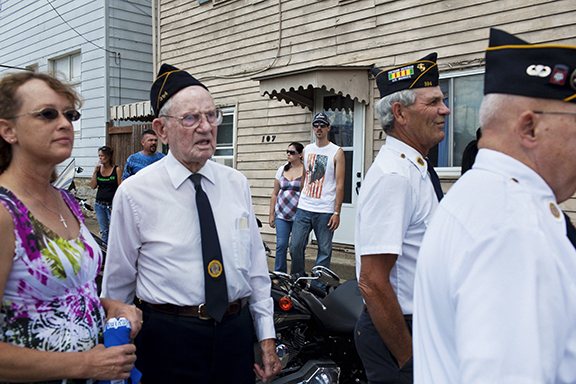Culture

Where the Highway Met Dead Tracks: ‘Carry Me Ohio’ Comes to OHIO
By: Emily Votaw
Posted on:
Carry Me Ohio is a haunting examination of Southeast Ohio, told through the camera lens of Ohio University School of Visual Communication alumnus Matt Eich. The photos examine Nelsonville, Russellville, Shade, Guysville, Chauncey, Glouster, Athens, Hocking Hills, Vinton County, Columbus and other nearby areas.
Oftentimes the pictures capture the gritty realities of poverty that many of the post-industry areas Eich documented experience; as well as the importantance of family and close-knit community in these areas.
Taken over the course of a decade and initially stemming from a photo story class Eich took as a sophomore at OU, Carry Me Ohio has been displayed around the country and Europe. It is a part of the permanent collections of the Museum of Fine Arts in Houston, TX; the Portland Art Museum, and the New York Library. Through Jan. 31, a portion of the project is on display in Schoonover 140, marking the first time that the photos have been publicly available in the state.

The project was published by Sturm & Drang in a limited edition run of 600 last year as the first installment of Eich’s ongoing four-part project, The Invisible Yoke, which concentrates on a community in racially divided Mississippi (Sin and Salvation In a Baptist Town,); the Hampton Roads portion of Virginia (The Seven Cities,); and, finally, miscellaneous images Eich has captured throughout the 50 states (We, the Free.) The first printing of “Carry Me Ohio” sold out within weeks.
A graduate of the Hartford Art School’s International Limited Residency, as well as a proud Bobcat, Eich said that the first images in Carry Me Ohio were taken in Chauncey when Eich was only 19.
“I was really drawn to Chauncey for some reason,” he said. “I kept going back. At that time I had a really difficult time articulating myself and explaining what my purpose was. I am not naturally outgoing; so it was hard to break out of my shell. I experienced a lot of rejection early on because of that.”
One day, while photographing the small town, Eich met Jessie Sellers and his sons, who were washing their dirt bikes in Chauncey.
“I struck up a conversation with Jessie, and he invited me to come home and with the rest of the family; to jump in the back of his truck with the boys. That was really my starting point,” said Eich. “I kept going back to them because I felt comfortable with them; and they introduced me to other people and let me tag along with them. Over the years I have tried to stay in touch with them, and I’ve watched the kids grow up and have seen how their lives have evolved.”
Eich said that one of the most difficult aspects of the project was earning the trust of the people in the communities he entered, camera in tow.
“By and large, these communities are very insulated and they have a natural mistrust of outsiders which is well warranted,” said Eich. “These people have historically been taken advantage of by corporations and by the government. So, it’s in their DNA to be typically distrustful of people who aren’t neighbors. These are small, tight knit communities where everybody knows everybody.”
Eich said that early on he learned the necessity of being entirely transparent about who he is, what he’s doing, and what his motivations are when speaking with the topics of his photographs.

“As a 19-year-old, I didn’t even know what my motivations were. It was lot harder for me to speak to people and articulate what I was trying to do,” said Eich. “It’s a little easier with practice, but it’s still difficult. I found that over time, you get to know people and the more time you spend with people the more they feel like they can understand what you’re going for.”
With the tumultuous political headspace of the United States in the months following the 2016 election, many have pointed to the population profiled in Carry Me Ohio is also part of the demographic who voted in millionaire reality show host Donald Trump as the 45th President of the United States.
“Certainly not everybody in Southeastern Ohio can lumped into one political or ideological category; though in a lot of these post industry areas, Trump has a large group of supporters,” said Eich. “I think that’s partially due to the fact they feel forgotten, and that they have felt that way for a long time. Sadly, I don’t think that his election is going to change things for the better for those regions.”
Eich said that in his extensive photographing of coal country, he found that many people felt that Trump had their vote as soon as he put on a coal miner’s hat and said that he would “bring coal back.”
Regardless of the political beliefs of the families and communities profiled in Carry Me Ohio, Eich said that, above all, he’s learned to not bring his personal beliefs into the artistic context of photographing his subjects.
“I try to meet people in a really open place, where I’m not projecting any of my opinions onto them and hopefully not passing judgement on them,” he said. “I just try to spend time listening and watching and trying to understand what motivates people’s decisions – and, more importantly, the things that connect us as humans and Americans.”
Eich will bring a presentation on Carry Me Ohio (which is, in case you were curious, a clever allusion to Ohio singer-songwriter Mark Kozelek’s Sun Kil Moon song of the same name,) to Ohio University soon; although his initial visit on Jan. 23 was cancelled due to illness.
“It’s always wonderful getting back to Athens; I hold OU and Athens really dear,” said Eich. “It’s where my life started in so many ways. It always feels like a homecoming whenever I get to come back.”

